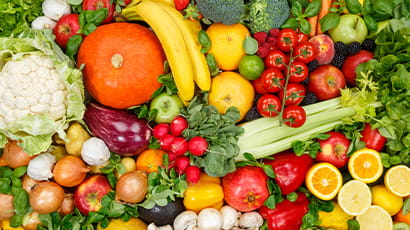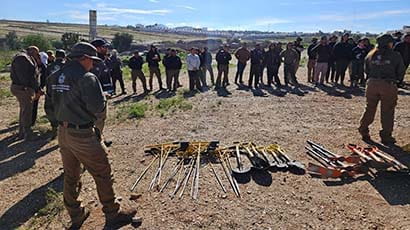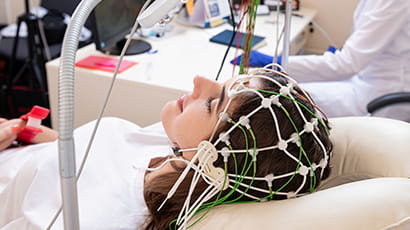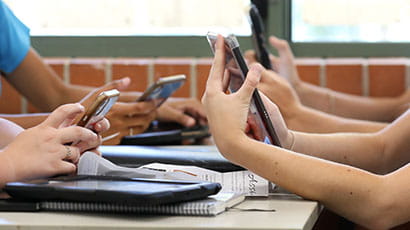Researchers develop new method to detect date rape drug in drinks
Smartphone technology could be used to detect the presence of date rape drugs in drinks, researchers at UWE Bristol have found.
Academics have discovered that the presence of illegal substance gamma-hydroxybutyrate (GHB) can be identified by taking a photograph of a drink and using a simple free app to check its colour. Following the addition of a simple chemical reagent, if the app detects a particular concentration of purple, it indicates the liquid is highly likely to contain the drug.
GHB, more commonly known as ‘Liquid Ecstasy’, is a Class C drug in the UK and prohibited for sale as a supplement in the USA. Due to its strong sedative and amnesic effects, it has been linked to drug-facilitated sexual assault cases, poisoning, and overdose.
As GHB has restricted availability, users are switching to its alternative gamma-butyrolactone (GBL), which is legal to purchase in the UK but has the same effects as GHB when consumed orally.
Researcher Dr Kevin Honeychurch, a Senior Lecturer in Forensic Chemistry, said GHB has previously been challenging to detect using spot testing, liquid chromatography, biosensing and gas chromatographic methods. Detection generally requires a well-equipped laboratory and trained staff.
Working with UWE Bristol student Anselmo Procida, Dr Honeychurch has developed an alternative method which involves adding readily available chemicals (hydroxylamine and ferric chloride) to a drink and then checking the liquid with a free smartphone app to measure the level of purple it produces.
Researchers believe the technology could be developed for point-of-use or care use, to detect the presence of the drug without the need for time-consuming and expensive laboratory tests.
“There is a growing need for methods capable of determining GBL in complex samples such as beverages,” said Dr Honeychurch. “There has recently been a rise in drink spiking incidents reported in the UK, and high-profile cases relating to the misuse of GHB have appeared in the media.
“This application uses a technology available to virtually everybody, outside of a laboratory setting and is operable without professional training or complex laboratory instrumentation.”
A downloadable free app available from the Apple App Store (Color Picker and Helper, version 1.1.6) was used for the research. The app was used to extract the numerical values of the Red, Green, and Blue (RGB) colour components of the liquid being tested. Using these values, it was possible to determine the concentration of the GHB present in fortified lager samples.
“The huge advantage of this approach is that it rules out the need for expensive pieces of lab equipment to conduct the tests,” said Anselmo Procida, who is studying forensic science at UWE Bristol.
“Tests could be done out in the field, at the point of need, as smartphones are devices that most people carry with them and are always available. Because it is a simple test you can conduct on the drink yourself, it doesn’t require technical knowledge.”
The findings of the research were published in a paper: Procida, A., & Honeychurch, K. C. (2022). Smartphone-based colorimetric determination of gamma-butyrolactone and gamma-hydroxybutyrate in alcoholic beverage samples. Journal of Forensic Sciences.
Related news

11 December 2025
Social media influencer work is far more demanding than it looks, research finds
A study exploring the mental health impacts of social media influencer work has revealed that life online is far more demanding than it appears.

25 November 2025
UWE Bristol experts join film Q&A exploring music and melodrama
Academics will take part in the Cary Comes Home Festival, with a post-screening Q&A exploring music, melodrama and emotional storytelling in classic cinema.

17 November 2025
Urgent reform needed to support ambulance-delivered end of life care, study finds
More than three quarters (78 per cent) of paramedics sometimes fear doing the wrong thing when caring for people in the last year of life, new research has found.

13 November 2025
Bristol’s screen industry experiences “boom-and-bust cycle” after post-pandemic recovery, new research from UWE Bristol finds
New research from UWE Bristol provides detailed insight into Bristol's screen sector.

13 November 2025
New AI research to revolutionise animal welfare
A UWE Bristol research project will combine behavioural science and AI to create technology that understands not only what animals do, but how they feel.

10 November 2025
Lessons from Low Traffic Neighbourhoods will drive better public engagement, study finds
Lessons from Low Traffic Neighbourhoods have informed a new toolkit to improve engagement with the public on challenging local street issues.

06 November 2025
First-of-its-kind study aims to help more people spend their final days at home
A new study will explore how architectural design could support end-of-life care in domestic settings.

29 October 2025
UWE Bristol academic unveils breakthrough in energy-efficient AI at NATO science forum
Dr Jonathan Lancelot has developed a new form of AI that could transform how intelligent machines operate in space, defence, and remote environments.

15 October 2025
UK food needs radical transformation on scale not seen since Second World War, new report finds
A new report from the Agri-Food for Net Zero Network+ finds urgent action on food is needed if the UK is to reboot its flagging economy, save the NHS billions, ensure national food security, and meet climate commitments.

07 October 2025
Academic playing role in project to find hidden graves in Mexico using drone technology
A UWE Bristol lecturer is playing a part in a project using drone technology to locate concealed graves in Mexico.

01 October 2025
New funding for researchers to develop trustworthy clinical AI for assessing brain activity
Researchers have received funding from UK Research and Innovation to help bring their innovative brain-monitoring AI technology closer to real-world use.

29 September 2025
Smartphone use hitting struggling pupils hardest, major study finds
Young people struggling with their studies at school are much more likely to have negative experiences on their smartphones than their better performing peers, a major new study has found.






